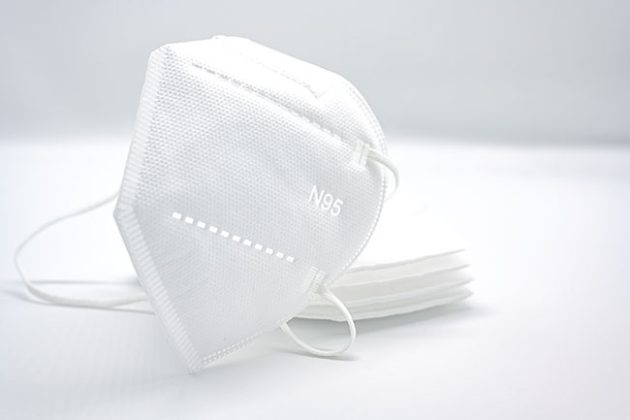
Protecting your lungs in the barn
By Treena Hein
Features Farmer Health/Safety barn air qualityWearing the proper protection every time is critical for you, your employees and your family.
 Poultry barn environments contain many dangerous components that could damage a farmer’s lungs. PHOTO: sebra / Adobe Stock
Poultry barn environments contain many dangerous components that could damage a farmer’s lungs. PHOTO: sebra / Adobe Stock I don’t always mask up when I go into the barn. I know I should but it’s inconvenient to do it if I’m just completing a short task and it’s at a point in the flock cycle where the dust level is pretty low.” Those are the words of a poultry farmer who wishes to remain anonymous – an admission that could likely be echoed by many poultry farmers in Canada if asked about frequency of masking up, an admission that’s to the definite detriment of their health.
To put it simply, poultry farmers should remember that the barn environment contains many dangerous components and wearing the proper mask or respirator is very important for farmers, their family members and employees, each and every time. “Lung damage from particulate matter can be cumulative and irreversible, but even one exposure can cause serious permanent damage,” explains Jessica De Leo, a registered respiratory therapist with the Lung Association. “Prevention is critical. Strict protocols should be put in place. I am located in Northern Alberta and a lot of my patients are farmers. There is a lot of lung disease here.”
In general, poor air quality can lead poultry farmers to experience a range of symptoms including sore throat, irritated eyes, wheezing and shortness of breath. Serious respiratory diseases that can result include chronic bronchitis, occupational asthma and pulmonary fibrosis.
Dust is obviously a large hazard. Poultry barn air can contain particulate matter from feed, feces, poultry litter materials, feathers, decomposing poultry skin cells, as well as mold, mold toxins, fungal spores, bacteria and other microorganisms. It also contains asthma-causing agents known as asthmagens. And ammonia, as poultry farmers well know, is especially prevalent during the winter months and can be particularly damaging to the health during periods of minimum ventilation.
Here is what happens when dust enters the human lungs, as explained by the US Centres for Respiratory Health. Dust travels into the tiny air sacs called alveoli where exchange of oxygen/carbon dioxide occurs and their surface blocks dust from entering the bloodstream. However, our lungs also contain immune cells called macrophages which remove dust particles found in the sacs and push them up with the aid of ciliary action in the upper respiratory tract to be coughed out. In situations where large amounts of dust are inhaled, any particles not handled by the macrophage brigade pile up in the tissue, which causes irreversible damage.
Barn dusts “also contain what is known as endotoxins, which are toxins of gram-negative bacteria,” according to the factsheet Respiratory Health on the Poultry Farm published by the University of Delaware. “These inflammatory substances can cause toxin fever which is similar to influenza. Symptoms include headache, nausea, coughing, nasal irritation, chest tightness and phlegm. Endotoxins are responsible for a number of work-related acute and chronic illnesses.”
This document also point to the many factors affecting dust concentrations in barns, ranging from bird and litter age, temperature, relative humidity, ventilation rate, time of day and bird activity. “Respiratory protection becomes especially important when dust levels rise in the barn, such as during colder weather when ventilation is reduced, with built-up litter and during the grow-out period.”

Experts consider a fit-tested disposable N95 mask to be the absolute minimum for visiting a poultry barn. PHOTO: John / Adobe Stock
Proper personal protection
Farmers need to protect themselves, their family members and obviously their employees. As employers, farmers are responsible for supplying the proper masks or respirators for their workers and contractors and making sure the right fit is achieved.
Children, pregnant women and the elderly are at higher risk of acute inflammatory reactions from poor air quality, and also having attacks of acute illnesses such as asthma, hypersensitivity pneumonitis and catching Avian Influenza. “Even one exposure can lead to scarring, chronic conditions like COPD (chronic obstructive pulmonary disorder) and permanent damage,” says De Leo. “Because children have smaller airways, their reactions can be very fast and severe. It’s really important that even if they – or anyone else – only go into the barn once a week for a half hour, they need to wear the right protection with the right fit.”
A fit-tested disposable N95 masks is the absolute minimum for visiting the poultry barn. “It must be airtight, so it needs to be the size that fits you and attached properly to your face and head,” says De Leo. “Adults should get a fit test every two years because as you age, your face can change. If you are going into the barn for extended period, removing dead animals, spraying cleaner, etc. respirators should be used. Again, they must be properly fitted and cleaned, handled with clean hands, etc. There is actually a lot of training required to ensure proper fit, maintaining hygiene, so that the respirator actually does its job.”
Respirators should be checked before each use and filters changed regularly. The service life of the filter is limited by hygienic (or non-hygienic) handling, damage and clogging (indicated by increased breathing resistance). Anyone with a heart condition, asthma, emphysema or other chronic lung condition should check with a doctor before using a respirator.
Outside the barn, don’t forget that air quality hazards such as dust also exist in the fields, so don’t forget to mask up when you are harvesting, applying crop protection products and at other appropriate times.
In terms of what holds farmers back from donning the right protection in the barn, De Leo says it’s likely that it’s time-consuming and tedious. “However, I strongly urge anyone reading this to consider protecting your lungs a part of farming life and to just do it, each and every time,” she says. “People really don’t understand or accept the degree of risk that’s involved, even with one exposure. Lung damage is irreversible. We don’t think the barn is dusty, we can’t physically see the particulate matter that’s there, and when we can’t see something, it’s easy to ignore. Please don’t ignore your lung health.”
Future campaign
The Canadian Lung Association may roll out an awareness campaign about lung health among farmers, says CEO Terry Dean.
“We’d like to raise awareness of the consequences of not protecting lung health as many lung conditions are preventable and environmentally-driven,” he says. “We now have PPE available like never before and it’s important that it’s used every time it’s needed. Lung health is best protected by making protection an automatic habit.”
Print this page